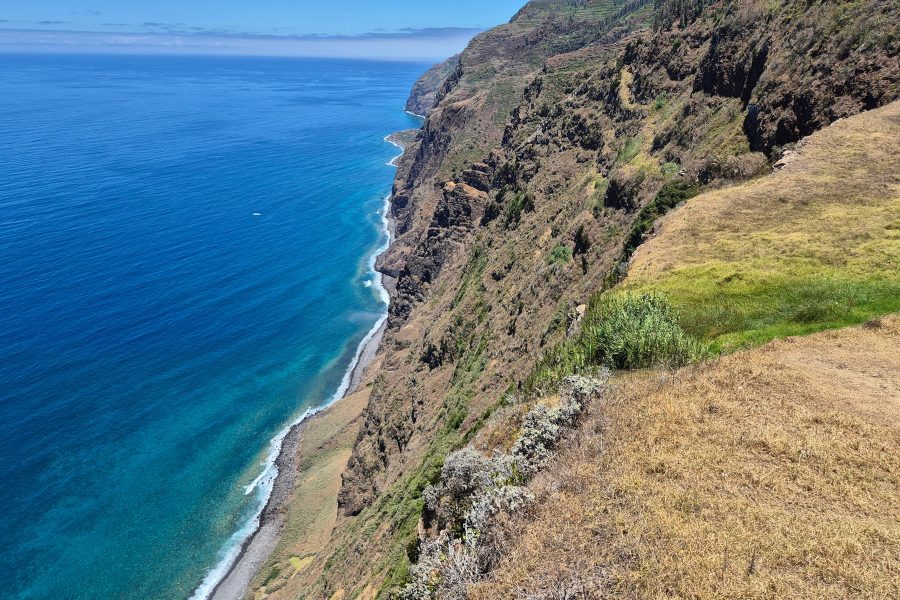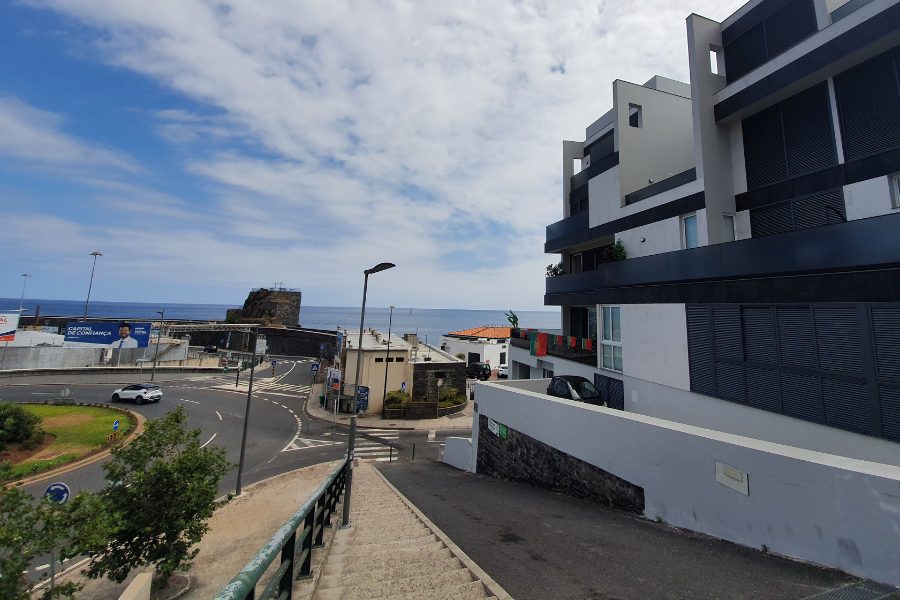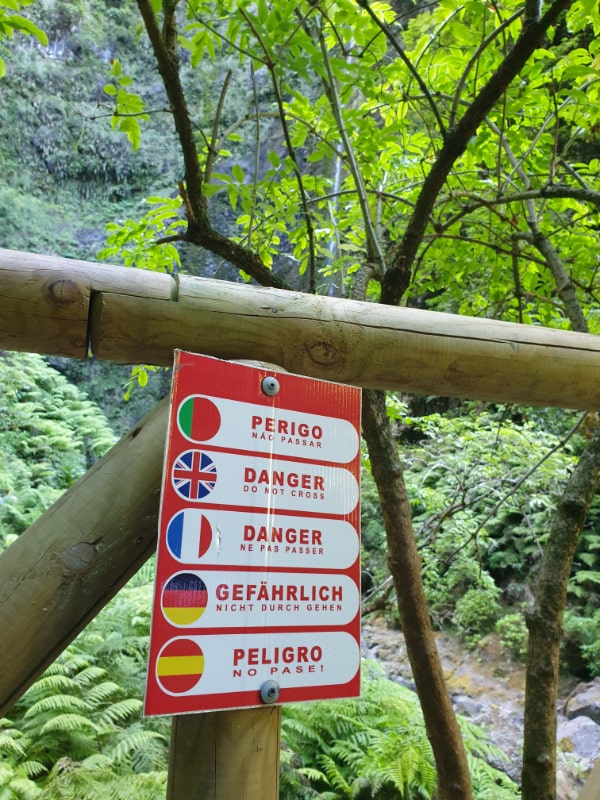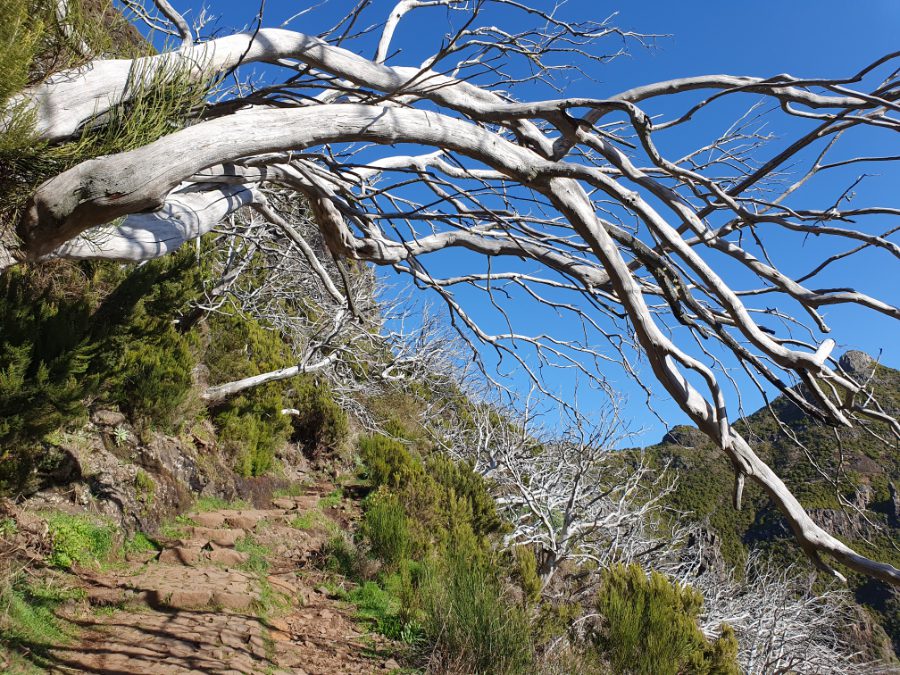The summer 2024 holidays are in full swing, and we’ll soon be publishing some new posts about Madeira’s trails, including some less popular ones. I thought it would be a good time to talk about how to visit Madeira safely.
Official safety rules for exploring Madeira’s trails can be found in several languages (PT, EN, DE, FR, ES, IT) on the IFCN and VISIT MADEIRA websites. IFCN is the Institute of Forests and Nature Conservation of Madeira, and Visit Madeira is the main office for promoting the island.
In this post I will go through them all, adding some tips & real life cases of accidents, that could be avoided.
Is Madeira Island safe?
The same thing that makes Madeira stunning, also make it a place that… should be explored wisely. Although infrequent, serious accidents also happen in Madeira. So here is where you should be especially careful to be able to return to Madeira safely and often 😉

Of course, this post is not intended to discourage and scare anyone away from visiting Madeira. I wrote it purely to remind you where you should be more careful, as many accidents could be avoided.
Based on the media reports from the last few years, accidents most often occur:
- Falls on trails, waterfalls and attractions
- Water accidents, being washed away by waves on ocean shores & in unguarded lava pools
- Falling rocks and landslides
- On the roads
Trails – this is an obvious one. Slips, falls, landslides. Falls from height also happen when visiting attractions and viewpoints – an example of this type of accident is the fatal accident of a Polish citizen under the famous Anjos waterfall.
A tourist died after falling from a height of about 30 meters near Cascata dos Anjos in the municipality of Ponta do Sol. […] According to the CM newspaper, the 36-year-old man of Polish nationality was taking a photo at the time of the fall. Source: [LINK]
Viewpoints in Madeira are often secured with railings. We strongly advise against crossing the safety barriers – after all, they were installed there for a reason – and often as a reaction to past accidents. The same applies to closed old roads – where we risk being hurt by falling rocks.
Water accidents – High waves must be taken seriously. It is not worth risking your life for a nice photo of a stormy ocean. In Madeira, waves have washed tourists away more than once, often with fatal consequences – the person who got washed away, or the person trying to save them.
During Christmas 2018, in Paul do Mar, a man rushed to the rescue of a drowning tourist who had been washed away by the waves, trying to take pictures of them. The tourist survived, the man who saved him did not… Source: [LINK]
On September 1, 2018, the body of a Czech tourist was found after he slipped on the coast in São Jorge and was then pulled into the waves. Source: [LINK]
On June 27, 2024, an Italian tourist was washed away by waves while taking photos in Poça das Lesmas, in Seixal. She died the next day. Source: [LINK]
This couple was a bit luckier and we are very glad the dangerous situtation ended well.
On the roads – Road accidents happen all around the world, but I decided to add this point in order to draw attention to the issue of roundabouts in Madeira. Namely, in Madeira, the right lane is only for people leaving the roundabout at the first exit. Cars going straight or left should occupy the middle lane, which a large number of tourists renting cars do not know, causing dangerous situations.

It is also worth being extra careful at pedestrian crossings. Unfortunately, not all drivers in Madeira are stopping eagerly to let pedestrians cross the street.
Madeira – how to explore it safely?
Hiking is a great way to explore nature, amazing landscapes and enjoy the beauty of Madeira. However, before you hit the trails, it is important to follow a few safety rules.
Here’s how to prepare for hiking in Madeira’s:
1. Choose the right hike
Choose trails that are appropriate for your fitness level, health, and skills. And remember – not just yours, but everyone joining your trip. Discuss the trail details with others – they may have a fear of heights, claustrophobia or health problems that you are not aware of. Do not pressure others to do a trail if they do not feel confident.
You can find information about Madeira trails at:
The official website of Visit Madeira
On our YouTube channel, in the “Madeira Trails” playlist, you will find virtual walk videos from many of the most popular trails.
These virtual walks will allow you to assess whether the trail is right for you and your group.
Avoid trails that are too difficult or require specialist equipment. There are almost 3,000 km of hiking trails in Madeira and there really is a trail for everyone.
There is a lot of information available on the internet, but not all of it is constantly updated. So check the date of the post:
2. Check if the hike is open
Especially after periods of heavy rainfall, some trails are immediately closed due to the threat of landslides, or landslides that have already occurred that make it impossible to pass. Of course, never go out on a trail knowing that it is closed.
But how do you find out if a hike is open?

In the case of tourist hits such as the Pico do Areeiro-Pico Ruivo or Levada do Caldeirão Verde, information about closures often reach the media and are shared on social media.
On the official website, we will find the most frequently and quickly updated information about the opening/closing of the most popular and recommended trails (marked with the letters PR for “Percursos Recomendados”).
However, not all trails belong to the list of officialy recommended hikes. In case of less popular trails, it is worth checking the latest comments in applications such as WalkMe, AllTrails, or even GoogleMaps reviews. The WalkMe application itself is not updated frequantly enough, but it is in the comments that users often inform others about temporary closures and other problems.
3. Check weather conditions
… before you set off on your hike and remember that weather conditions can change quickly. Bring appropriate clothing (just in case) and gear.
4. Prepare well & don’t leave too late
Good hiking shoes, snacks and water are essential, and for more difficult trails you may need trekking poles, printed maps and:
- Are you hiking in the mountains or in full sun (especially PR8 Vereda da Ponta de São Lourenço in the summer)? Don’t forget a hat and a sunscreen.
- Are you hiking along a levada with many waterfalls? Bring something waterproof.
- Is there a long tunnel on the trail (e.g. PR16 Levada Fajã do Rodrigues)? Bring a flashlight so that the one on your phone doesn’t drain your precious battery.
IP-RAM also recommends taking a whistle on the trail, which is incredibly useful during search operations.
5. Be careful not to slip
Hiking on levadas or stone paved trails like the PR19 Caminho Real do Paul do Mar after a heavy rain is not a good idea. Wet levadas and stone trails are very slippery, easy to trip and fall. Caught in the rain, or walking under a waterfall? Go slowly and carefully.
6. Do not hike solo, inform others
If possible, don’t go hiking alone. In the event of an accident, others will be able to notify the emergency services.
Traveling solo? No problem – book a guided tour or a group transfer to the trail (self-guided tours) or simply get to know another hiker at the start of the trail.
If for some reason you are going on the trail alone – at least inform others of your planned route and return time. Tell your loved ones or hotel staff where you are going and when you plan to return. In the event of an accident, they will know where to look for you. Remember, however, not to change the trail at the last minute. If there is little time left before dusk, do not take risks and do no leave too late.
7. Take a charged phone + safety power bank
It’s hard not to take pictures on Madeira trails. Using a camera, however, uses up a lot of battery life, which may not last until the end of the trail. It’s always good to have a fully charged battery and a spare power bank in case you need to use a flashlight or call for help. Not in all places, but on many Madeira trails we have at least partial coverage.
8. Don’t take shortcuts, stick to the route
Don’t go off the trail, don’t try to take shortcuts, because this involves a high risk of not only getting lost, but also falling. Dangerous cliffs are often hidden under the lush vegetation.
Obviously, never not cross the safety barriers – after all, they were installed there for a reason, and often as a reaction to past accidents.
9. Think about others
When trying to overtake someone or pass someone coming from the other direction, make sure you both have a safe way to pass, especially on the narrowest parts of the path.
12. Avoid risky situations, especially when using a camera
Be especially careful when taking photos. One of the fatalities on the Ribeira da Janela trail in Porto Moniz was a tourist who took a step back while trying to pose for a “selfie” photo. [Source]
Don’t get too close to dangerous cliff edges or high waves in the ocean… and don’t be afraid to (friendly) warn others when they do something dangerous. When we are in a holiday mood, and impressed by the beauty of Madeira, we can sometimes forget ourselves and our common sense. A polite reminder can save someone’s life.
Sudden bad conditions? Landslides? Other dangers? It’s not worth it. when in doubt – turn around. After all – you do not lose anything – you just gain a valid excuse for getting back to Madeira again in the future ;).

So how to behave on Madeira’s hikes?
In addition to safety rules, IFCN also reminds you to:
You’ll get extra Say Yes To Madeira superhero points for collecting trash found along the way, especially bottles!

What to do in case of an accident?
The emergency number in Madeira is 112.
You can also download the Prociv Madeira APP, which will come in handy in a critical situation. It contains all the basic emergency numbers, allows you to stay up to date with alerts, provide the services with your location and more. It is available in English, Portuguese, French and German.

Are there a lot of hiking accidents in Madeira?
How often do hiking accidents occur in Madeira? Are there really that many? Accident statistics are available on the website of the Regional Civil Protection Service (Serviço Regional de Proteção Civil).
The website is only available in Portuguese. To view monthly statistics, select the year, month, and then select the option “Acidentes em Percursos Pedestres” which means accidents on trails.
Unfortunately, they are not listed by the name of the trail where the accident occurred, but divided into regions of the island. So we don’t know exactly which of Madeira’s trails are “the most dangerous”, we can only guess.
What are the main causes of hiking accidents on Madeira?
When serious hiking accidents occur and the information reaches local media, a presumed cause is often mentioned. Sometimes it is the weather or poor health, sometimes lack of attention (e.g. when taking photos).
However, the SRPC, does not collect and publish data on the causes of accidents on the trails. Precise statistics on the causes are therefore unavailable.
Will I pay for the rescue operation?
If an accident does occur, do not hesitate to call 112 for help. Are you afraid that you will bear the costs of the rescue operation? No need. According to information provided by the Regional Civil Protection Service, operations performed as part of rescue and pre-hospital emergency services in the Autonomous Region of Madeira do not involve any costs for the victim of the accident. Rescue operations are a completely free service, provided by the local government and the relevant municipalities. Despite this, IP-RAM recommends, especially for citizens from outside the European Union, to purchase travel insurance that covers the entire cost of treatment.
We hope this post was useful. Enjoy the beauty of Madeira, but do not forget to pack your common sense with you!
Have a nice and safe vacation!